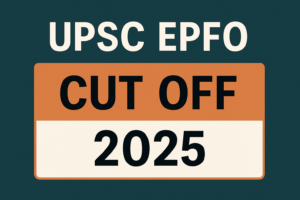Q17. “In contemporary development models, decision-making and problem-solving responsibilities are not located close to the source of information and execution, defeating the objectives of development.” Critically evaluate. (250 Words)
Approach:
|
Model Answer
Development is effective when decision-making aligns with the realities of those it seeks to serve. However, in contemporary models, planning and control are often centralized at higher levels of government, leaving local institutions as mere implementing agencies. This distance between policy and practice weakens the objectives of inclusiveness, efficiency, and empowerment.
Adverse impact of Decision-Making and Execution being not Close to the Source of Information and Execution
- Information Asymmetry: Policy makers at the top lack granular, local knowledge. This leads to mismatched policies that ignore community realities.
- Eg:: centrally designed welfare schemes often fail due to poor understanding of local needs.
- Delayed Response: Information has to travel upward for approval and downward for execution. Creates bureaucratic lag in crisis response.
- Eg:: slow disaster relief when local authorities lack decision power.
- Reduced Accountability: Executing officers may blame “higher authority” for bad outcomes.
- One-size-fits-all Policies: Centralized decisions apply uniform rules. Ignores diversity in geography, culture, economy.
- Eg:: uniform agricultural subsidies may not suit rainfed vs irrigated regions.
- Innovation Stifled: Local actors cannot adapt policies or experiment. Top-down orders discourage contextual innovation.
- Eg:: strict education policy design ignores successful grassroots pedagogical models.
- Higher Costs: Centralized approvals increase red tape. Resources wasted in compliance and reporting, instead of service delivery.
- Loss of Trust: Citizens perceive governance as distant, insensitive, or authoritarian. It reduces participation and cooperation.
Concerns when Decision-Making and Execution are close to the Source of Information and Execution
- Local Elite Capture: Dominant groups corner resources.
- Eg:: In some Panchayats, upper castes monopolize MGNREGA jobs.
- Weak Capacity: Local bodies often lack trained staff.
- Eg:: Many Gram Panchayats under-utilize Finance Commission grants
- Regional Disparities: Richer states manage better, weaker ones lag.
- Eg:: Kerala’s success vs Bihar’s weak Panchayat outcomes.
- Dilution of National Standards: Excessive local autonomy risks uneven entitlements.
- Eg:: RTE Act provides national schooling benchmarks.
- Blurred Accountability: Confusion over responsibility across levels.
- Eg:: ASHA workers blamed for service gaps beyond their control.
- Resource Constraints: Local bodies lack fiscal autonomy.
- Eg:: ULBs’ low property tax (<1% of GDP) limits their scope.
- Short-Term Populism: Leaders may prioritize freebies over sustainability.
- Eg:: Some Panchayats push free electricity schemes unsustainable in the long run.
- Risk of Fragmentation: Excessive diversity may undermine unity of national programs.
- Eg:: Divergent approaches to mid-day meals create uneven nutrition outcomes.
Way Forward (Decentralization with Checks & Balances)
- Subsidiarity Principle: Decisions at lowest effective level, higher tiers for oversight. Example: 73rd Amendment – Panchayats with state supervision.
- Capacity-Building of Local Governments: Training and support enable effective decentralization. Example: Kerala’s People’s Plan trained Panchayat members.
- Fiscal Devolution with Accountability: Funds must flow directly but with audits. Example: Finance Commission grants + CAG audits.
- Social Accountability Mechanisms: Citizen oversight prevents corruption and capture. Example: MGNREGA social audits in Andhra Pradesh.
Hybrid Policy Model: Centre sets standards, states/local adapt. Example: RTE norms + Delhi’s Happiness Curriculum.
Scaling Local Innovations Nationally: Successful state experiments adopted nationally. Example: Tamil Nadu’s Mid-Day Meal scaled in 1995.
Development divorced from local contexts risks becoming inefficient, inequitable, and unsustainable. While centralisation is important for national vision, security, and equity, its effectiveness depends on how well it accommodates local execution, community participation, and accountability mechanisms.

 UPSC EPFO Cut Off 2025 (Expected): Categ...
UPSC EPFO Cut Off 2025 (Expected): Categ...
 UPSC EPFO Answer Key 2025 Out (Unofficia...
UPSC EPFO Answer Key 2025 Out (Unofficia...
 UPSC EPFO Question Paper 2025 PDF Downlo...
UPSC EPFO Question Paper 2025 PDF Downlo...

























